So the Unit left Cardiff by special train on the 29th December 1914 on the 30 or so mile journey to Porthcawl under the command of Lt Col J. E. H. Davies, who was to command the Unit for the rest of the War. The only other officers with the Unit at this time were Major W. B. Edwards, Capt A.W. Anderson and Quarter Master (Hon Lieut) Thompson and possibly Lieut Fredric Samual Rowland (who, on arrival at Porthcawl and finding that the other Field Ambulance unit there did not have any medical officers, transferred to that unit).
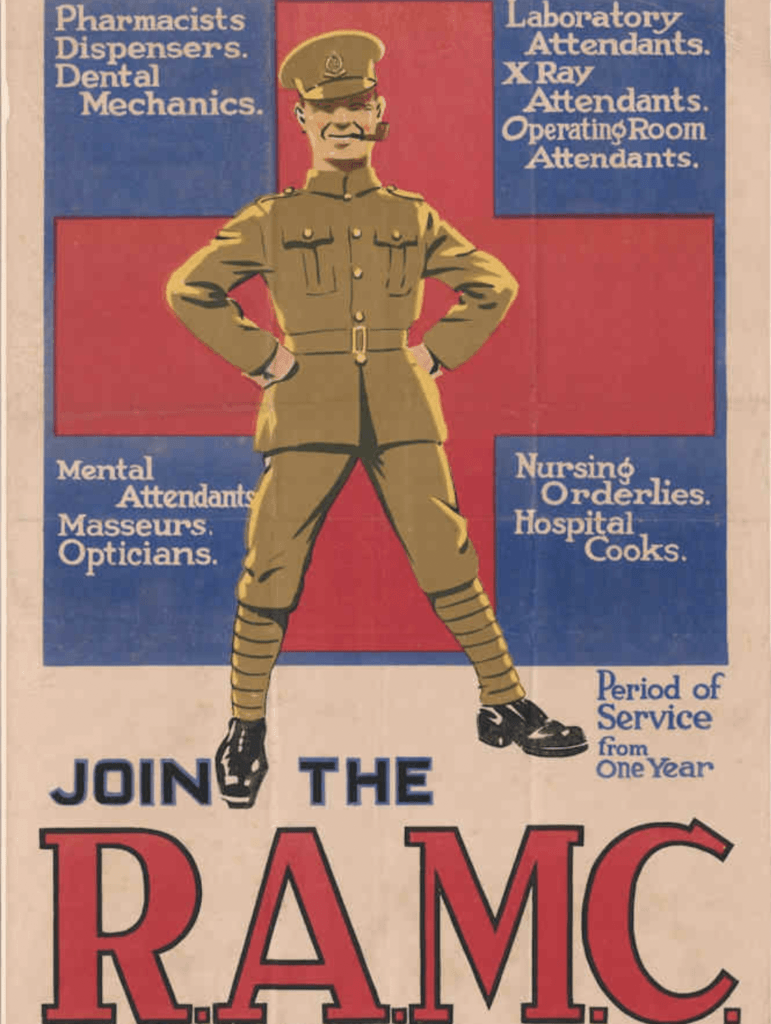
Leeds (URI:http://digital.library.leeds.ac.uk/id/eprint/1708).
The papers related to the formation and early days of the Welsh Army Corps, which are available to view online at Cymru 1914 – The Welsh experience of the First World War (http://cymru1914.org/en/home), provide a fascinating insight to the difficulties of raising an Army Division from scratch. Firstly, there was some confusion as to the make up of a Field Ambulance Unit with both Mr Herbert Lewis and Mr Owen Owens (Secretary of the Welsh Army Corps) believing that the St John Ambulance Association was going to raise a Field Ambulance Unit of 10 officers and 223 other ranks. While this is the total strength of a Field Ambulance Unit, approximately 40 of the other ranks would be Army Service Corps men provided as attached personnel, not Royal Army Medical Corps. Secondly, in all correspondence in November and December both Mr Herbert Lewis and the members of the Welsh Army Corps referred to the Field Ambulance Unit being formed by the St John Ambulance Association as the 1st Field Ambulance, Welsh Army Corps. This caused confusion when the Unit arrived at Porthcawl on the 29th December 1914 where the other Field Ambulance unit there had already names itself the 1st Field Ambulance Unit of the Welsh Army Corps.
During the first few months of training, most of the Welsh Army Corps (later the 38th (Welsh) Division) were clothed in Brethyn Llwyd (Welsh cloth) with the exception of the 130th (St John) Field Ambulance who wore their St John Ambulance uniforms, until sufficient army khaki uniforms arrived.
While the men who were attested at the St David Centre in Cardiff on 12th December 1914 were mostly St John men, as time passed, these men were added to by additional recruits, both St John men from outside Wales and men with no prior connection with the St John Ambulance Association, such as 48135 Clifford William Jarman. As the Unit’s training progressed, a number of the recruits, both from the original St John men as well as the later recruits, were either found to be unfit for military service or transferred to other medical and non medical Units, so that by the time the Unit sailed to France in December 1915, it was composed of a mixture of Welsh St John men, Non Welsh St John men and men with no prior St John connection, but the majority of the R.A.M.C. men were still Welsh St John men.
While training both at Porthcawl, Porthmadoc, Criccieth and Prestatyn, the usual daily routine of the Unit was as follows; 07.30 Parade followed by physical exercise drill, the men then returned to their billets for breakfast to return for a further parade at 09.30. Following this second parade the men were trained in both Unit and Company marching drill or taken on a route march. Lunch was usually between 12.30 and 14.00 when there was another parade that was followed by further marching drill or a route march. This routine was followed six days a week and on Sunday, there was usually a parade at 09.30 followed by a church service, after which the men were dismissed for the rest of the day. As time progressed, lectures in first aid and other medical and military topics were also included and as the necessary equipment arrived, training in stretcher drill was also added to the training programme.
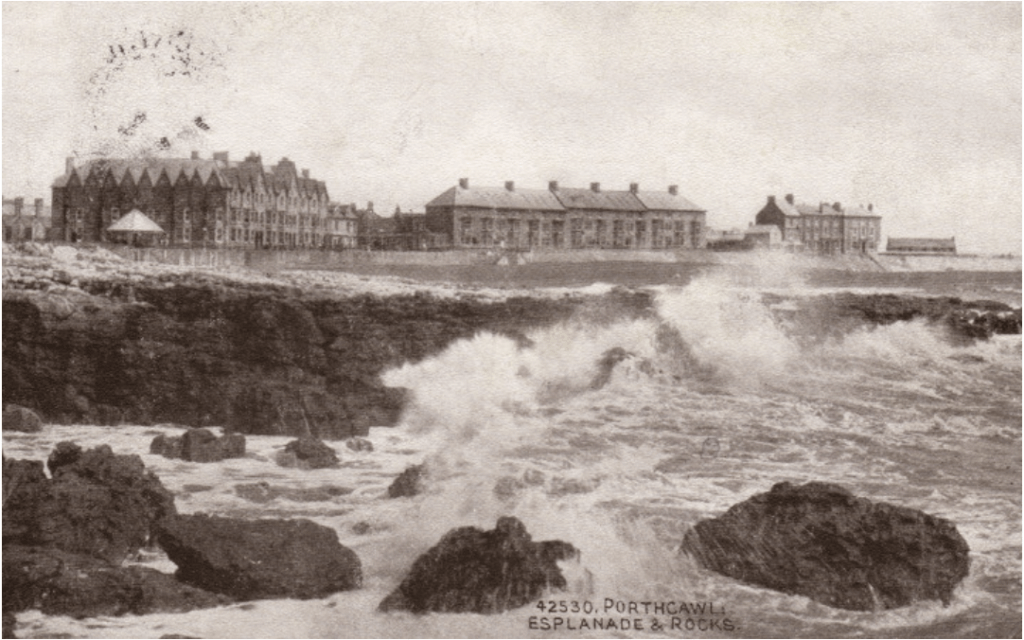
On arrival at Porthcawl, the men reported to the Police station to be allotted their billets. Friendships were already being formed in the Unit and 48135 C W Jarman was pleased to be billeted with his two new friends, 48128 F B Sumption and 48064 L W Williams. The town and surrounding area was already full of troops, men of the Rhondda Battalion, the Cardiff Bantams and Cyclist Corps to name but a few and so the men of the Unit were dispersed over a wide area.
On Wednesday 30th December, the Unit paraded on the Esplanade at 9am and at midday all the troops in Porthcawl were reviewed by Mr Ellis J Griffith M.P. and other dignitaries and went on a route march in the afternoon. The Unit continued with Drill and Route Marches daily, and on Friday 1st January 1915, Lt Col Davies ordered that from then on the Unit would parade at 7.30am outside the Church at Newton each day to fall in line with the other units based at Porthcawl, who also started their day with a 7.30 parade. No more late start for the men of the Unit except on Sundays!
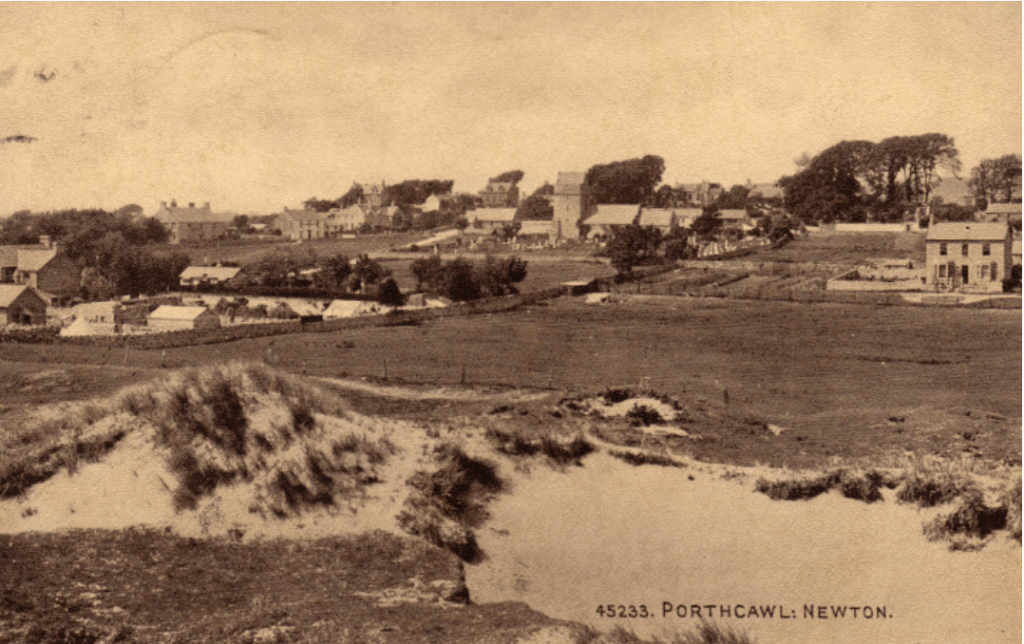
During a break halfway through a route march on the 2nd January, men decided to form a male voice choir and arranged to purchase some footballs. A sure sign of the men starting to gel together as a Unit. On Tuesday 5th January, 48135 Clifford W Jarman records in his diary that while passing through the village of Nottage on a route march, the Unit came across a small crowd. There had been an accident and Capt Anderson called for four men to assist in administering ‘first aid’. A door was used as a stretcher to carry the injured man with a crushed leg to a nearby house. The first casualty treated by the Unit on duty.
The weather continued to be poor with frequent downpours, so the men were often drenched while drilling or on route marches and they still had only the boots and clothes they had joined with. No army uniforms or boots had yet to be issued to them and with all the marching etc, many of the men’s boots were worn out by this time.
On Friday 8th January the men received their pay – 4 shillings (20p in today’s money!) with the remained of their pay being held in reserve until the end of the month.
The daily routine continued on Monday 11th with parade at 7.30am, after which the men returned to their billets for breakfast, then roll call at 9.30am, drill at Sandy Bay, lunch, then a route march in the afternoon. The daily routine of 7.30am parade, 9.30 roll call, drill and route marches continued often in driving rain. The men had still not been issued with any Army uniforms but on Monday 11th, names were taken for the issue of clothing, so there were hopes of some arriving soon. At this time, the 07.30 parade was frequently taken by 48070 Sgt George H Osborne (picture below) who did not subsequently go out to France with the Unit. Of interest are the two medals he is wearing. The one on his left breast is the 1911 coronation medal (George V) while the one on his right breast is the life-saving medal of the Order of St John (one of the few medals not awarded by the Crown that could be worn on a military uniform, but always on the right breast). This was awarded to him for his part in the 1909 disaster at the Alexandra docks in Newport.
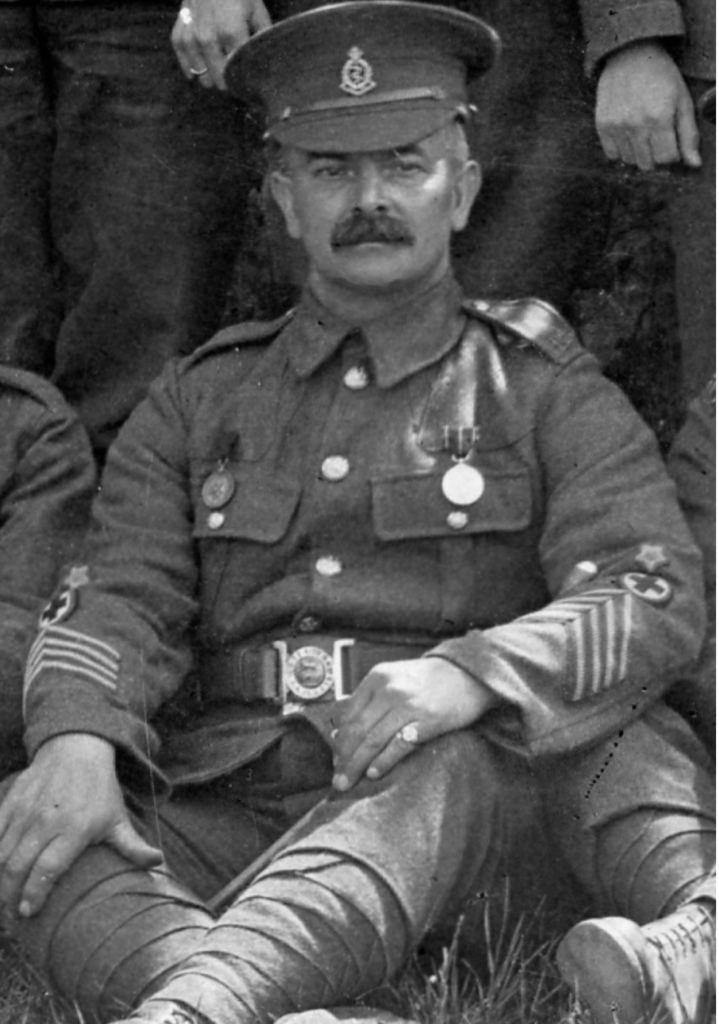
Even by early January 1915, the boots of many of the men in the Unit were in a poor state and it was not until Saturday 16th January that the men were issued with Army boots and socks. 48128 Sgt Francis B Sumption records in his diary that he was issued with khaki puttees on the 23th January and that the Unit was issued with grey wool cardigans on the 25th January, which were worn when doing their physical exercise drill (see photograph below) which he describes as making the men look like little teddy bears.
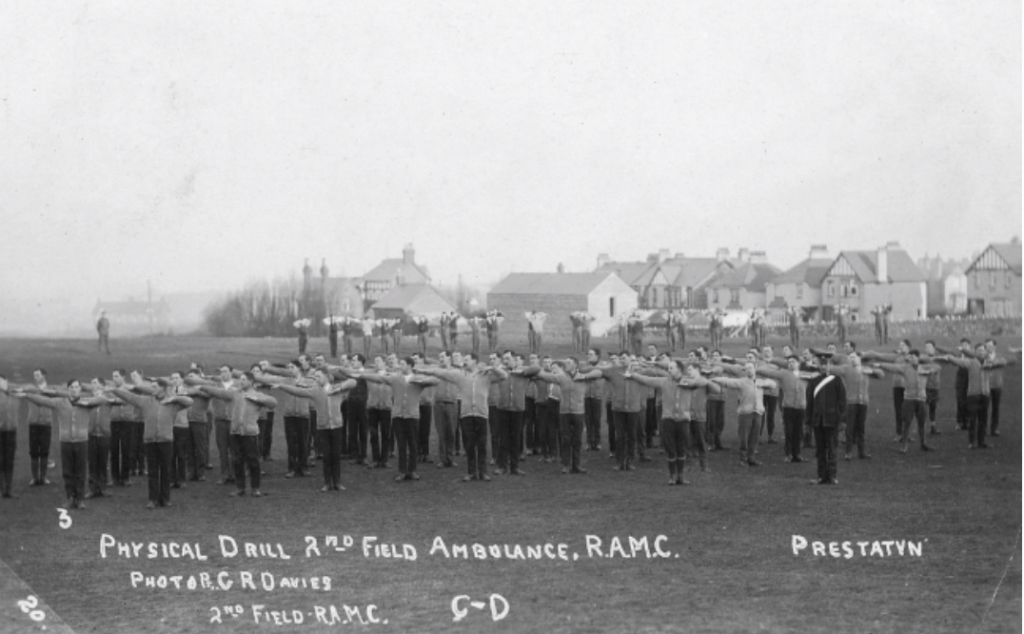
Physical exercise for the men of the 130th (St John) Field Ambulance in their grey wool cardigans (the Unit was still know at this time as the 2nd Field Ambulance of the Welsh Army Corps)
The image above is by kind permission of Helen Cleaves – Granddaughter of 48542 Pte James Cleaves.
On Thursday 21st January, 48135 William Clifford Jarman (who was a motor bike demonstrator in civilian life, and had joined the Unit at the suggestion of Col Davies, who knew his family well, to become an ambulance driver, discovered that the transport section of the Unit was to be provided by the Army Service Corps. This was also news to the St John Ambulance Brigade who had from the start assumed that the entire Unit would be RAMC (St John) men and helps to explain the number of men in the Unit at this time. On the following day, Col Davies read out a letter to the Unit from Herbert Lewis explaining the news about the transport section and that nearly 50 men who had joined the Unit would have to be transferred to other units.
News arrived on the 23rd that the Unit would be leaving Porthcawl the following Thursday for North Wales and that the men could have a day’s leave on the Monday or Tuesday.
On Sunday 24th, the Unit paraded at 9.30am as was usual on a Sunday and were than marched to the Common and lined up with the other units based at Porthcawl for a Drumhead service. Everyone was kept waiting for over 1/2 an hour getting very cold in the wind before the event was cancelled and they were all dismissed for the rest of the day. While many of the the men were away on leave on Monday and Tuesday, training in the form of drill, route marches and physical exercise continued while the Unit packed up ready for the forthcoming move to North Wales.
On Thursday 28th January 1915, the Unit paraded on the Esplanade at 7.00am and following a roll call, marched down John Street where two trestles had been set up where the men collected their rations for the journey. These consisted of four sandwiches and two cakes that 48135 C W Jarman records were very nice. After a wait of an hour or so, the Unit boarded the special train that traveled via Neath, Carmarthen, Lampeter, Aberystwyth and Bargoed, arriving at Porthmadoc at 4.15pm. 48554 Pte George Henry Jickells records in his diary that the Unit had a grand reception at Porthmadoc as they were the first lot of troops to arrive in the town.

Be the first to comment